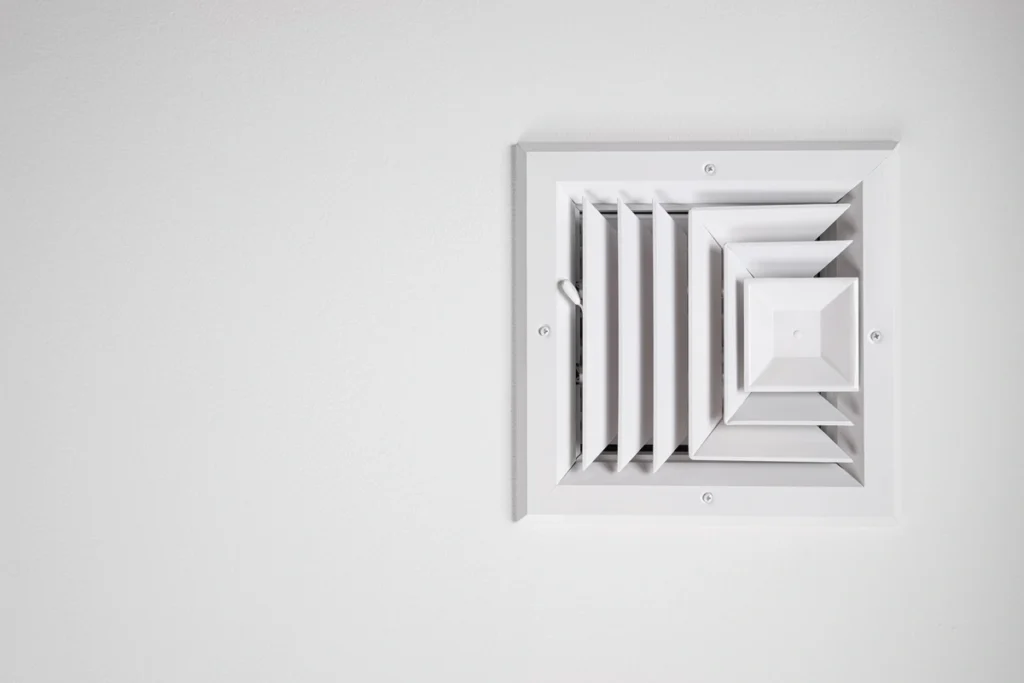When it comes to setting up an efficient and effective heating, ventilation, and air conditioning (HVAC) system, proper duct installation is crucial. Whether you’re a seasoned professional or tackling this for the first time, understanding the nuances of duct installation can significantly impact your system’s efficiency and performance.
This guide will walk you through the entire process of duct installation, covering everything from initial design considerations to the commissioning of the system. We’ll also provide tips on making the installation easier and ensuring that your HVAC system operates at peak efficiency.
Aimed to equip you with practical tips, industry insights, and step-by-step instructions to streamline your HVAC duct installation process, this article will cover the following:
- Designing the ventilation system
- Selecting the right ducting
- The importance of the HVAC location
- HVAC ductwork installation cost
- Installation tips
✍️ Designing the Ventilation System
Designing the ventilation system for HVAC ductwork is a critical first step in ensuring the efficiency and effectiveness of heating, cooling, and air quality control in any building. This initial phase requires meticulous planning and understanding of airflow dynamics to create a heating and cooling system that not only meets the specific needs of the space but also operates optimally under varying conditions.
- Understanding the Importance of Design: The first step in any duct installation is to design the heating and cooling system. This is crucial because the design will determine the efficiency and effectiveness of your entire HVAC system. A well-designed system will ensure proper air distribution, maintain indoor air quality, and optimize energy use.
- Assessing the Layout: Before purchasing any materials or cutting any ductwork, assess the layout of the building. Consider factors such as the size of the area, the number of rooms, and the overall architectural features. This assessment will help in creating layouts for HVAC ducts that ensures optimal airflow throughout the building.
- Software and Tools: Utilize design software and tools that can help in creating precise ductwork layouts. These tools often include features that calculate the load requirements and help in visualizing the airflow patterns within the building.
🧐 Selecting the Right Ducting

Selecting the right ducting is pivotal in the installation of HVAC systems, as it directly influences the efficiency and functionality of the entire system. This process involves more than just choosing ducts; it requires a careful evaluation of materials, sizes, and types of ductwork to ensure optimal air flow and energy efficiency. Consider these to make an informed decision that enhances system performance and indoor air quality:
- Material Choices: Ductwork can be made from a variety of materials, including sheet metal, fiberglass, and flexible ducting. Each has its own advantages and disadvantages. For example, sheet metal is durable and less likely to harbor mold or pests, while flexible ducting is easier to install in tricky spaces.
- Size and Shape: The size and shape of the ducts must be appropriate for the space and the HVAC system’s requirements. Incorrect sizing can lead to inefficiencies, such as increased energy use and uneven heating or cooling.
- Insulation: Insulation is key to preventing heat loss and gain through the ducts. Well-insulated ducts help in maintaining the desired temperature, reducing energy consumption, and enhancing overall comfort.
📍 Location of the HVAC System
The location of the HVAC system is critical as it greatly affects the efficiency and effectiveness of the system’s operation. Proper placement ensures optimal airflow, easier maintenance, and reduced energy consumption, all of which contribute to enhanced overall system performance and comfort within the space.
- Strategic Placement: Choosing the right location for the HVAC units themselves is just as important as the ductwork. The location should be accessible for maintenance while being unobtrusive. Additionally, it should facilitate easy routing of the ductwork with minimal bends and obstructions.
- Integration with Building Design: Ideally, the placement of HVAC units should be considered during the architectural design of the building to ensure seamless integration and functionality.
💵 HVAC ductwork installation cost
The cost of HVAC ductwork installation can vary widely depending on several factors, making it important to consider all elements that might affect the overall expenses before beginning your project. Here are some key points that influence the cost:
- Type of Ductwork: The material and type of ducts (e.g., flexible, fiberglass, or metal) can significantly affect costs. Metal ducts, for instance, are typically more expensive than flexible ducts.
- Size and Complexity of the System: Larger homes or buildings with multiple levels and complex layouts require more ductwork, which increases the cost.
- Labor Costs: Installation costs can vary depending on the region, the experience level of the HVAC contractor, and the complexity of the installation.
- Accessibility: Easier access to where the ductwork needs to be installed can reduce labor time and costs, whereas difficult access areas like tight crawl spaces or attics might increase them.
- Replacement vs. New Installation: Retrofitting or replacing old ductwork can sometimes be more costly than installing new ductwork in a new build due to the additional labor involved in removal and modification.
💡 6 HVAC Duct Installation Tips
Installing HVAC ductwork effectively is key to ensuring your system operates efficiently and maintains comfort throughout your home or building. Below, we offer a selection of tips to help streamline the installation process, optimize performance, and extend the lifespan of your HVAC system.
1. Avoiding Long Runs and Bends:
When installing ductwork, aim to minimize the length of duct runs and avoid unnecessary bends. Long runs and sharp bends can reduce airflow efficiency and increase pressure drops, which makes your system work harder and less efficiently.
2. Working with Existing Ducting:
If integrating new ductwork with an existing system, it’s crucial to ensure compatibility. Check the condition of old ductwork and make necessary repairs or upgrades. This might include sealing leaks or adding insulation.
3. Sealing and Insulation:
Properly sealing ductwork is critical to prevent air leaks. Use mastic sealant or aluminum foil tape for best results. Ensuring adequate insulation and that all joints and connections are secure maintains the integrity of the air distribution.
4. Commissioning the System
Commissioning the HVAC system is a crucial final step in the installation process, designed to ensure that all components are functioning correctly and efficiently. Consider these necessary procedures for testing and adjusting your system to optimize performance and confirm that it meets all design specifications.
5. Importance of Airflow Testing:
After installation, commissioning the system is essential to check airflow and system operation. This process involves testing and adjusting the system to ensure it meets the designed specifications. Proper airflow is crucial for efficiency and comfort.
6. Balancing the System:
Air balancing involves adjusting the airflow of ducts to ensure even distribution of air throughout the building. This might require adjusting dampers, rerouting ducts, or tweaking fan speeds.
😎 Making Installation Easier

Making HVAC installation easier is all about preparation and understanding the best practices that streamline the process. Here are some valuable tips and strategies to simplify HVAC ductwork installation, helping both DIY enthusiasts and professionals save time and reduce potential complications.
- Pre-Planning: Spend ample time in the planning phase to avoid common pitfalls during installation. Detailed blueprints and clear installation plans can simplify the process and prevent costly mistakes.
- Professional Consultation: While DIY is possible, consulting with HVAC professionals can provide insights and help troubleshoot complex scenarios. They can also ensure that your system complies with local building codes and standards.
- Use of Modern Tools: Employ modern installation tools and equipment. Tools like duct lifters and cutters can make the installation process quicker and safer.
- Regular Training: If you’re an HVAC professional, keeping up with ongoing training and certifications can make installations smoother and more efficient.
Our Team Is Ready To Help
Duct installation is a complex but critical component of any HVAC system. By understanding and implementing the best practices outlined above, you can ensure that your system is efficient, effective, and reliable. Our team at Palmetto Air Conditioning is here to make the process of keeping your home comfortable easy. Get in touch with any questions you might have. Remember, good design, proper material selection, strategic placement, meticulous installation, and thorough commissioning are the keys to a successful HVAC system that will serve you well for years to come.
